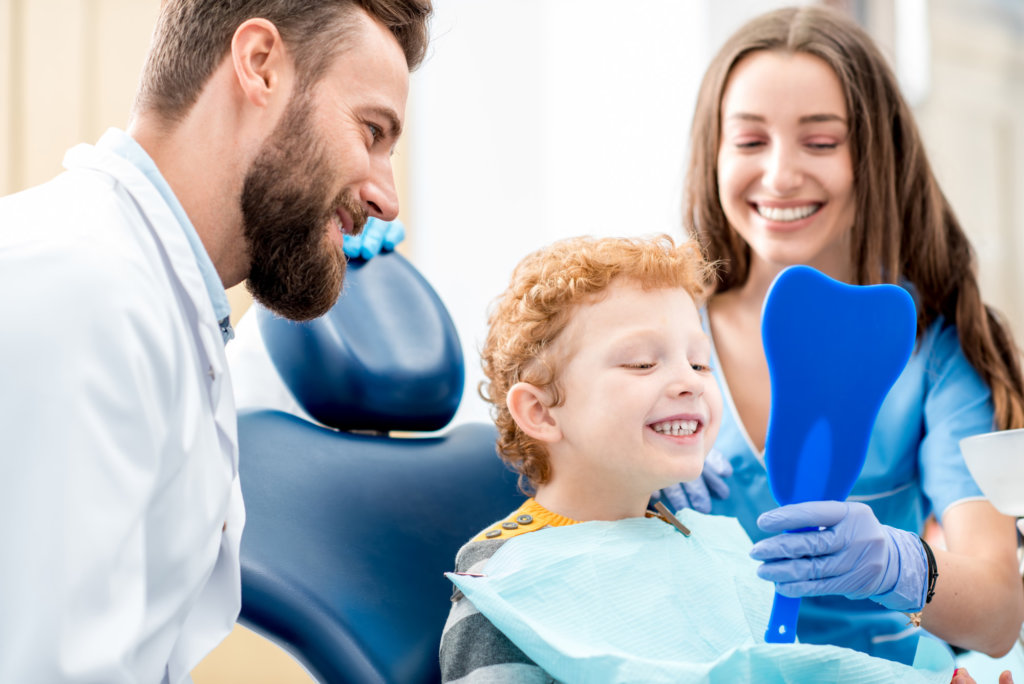
28% of kids between the ages of two and five-years-old have cavities in their primary teeth. And while you may not realize it, your child should begin seeing a dentist before their first birthday to ensure a lifetime of healthy teeth and gums.
Between 9% to 15% of Americans have fear and anxiety about seeing their dentist. As a result, they skip necessary visits and end up with worse problems.
That’s why it’s so important to teach kids early on that dentists are there to help them and that they’re not scary. Knowing what they can expect from their visit to the Arlington pediatric dentist can help.
Keep reading to learn each step taken during a dental cleaning.
Prepare in Advance Your Visit to the Arlington Pediatric Dentist
Always try to schedule your child’s first teeth cleaning early in the morning. That way, there’s less time to be anxious. It’s also less likely there will be a longer than expected wait time.
Make sure your child is well-rested and well-fed. If the child is old enough, you may want to discuss what he or she can expect to experience during their visit.
Consider reading to your child books and/or have them watch videos or tv shows to help them visualize and understand what the visit will be like.
Tips for Especially Fearful Child Patients
If you feel your child is especially fearful, it may make sense to schedule a pre-cleaning appointment. Set up a shorter appointment where your child can come in and familiarize themselves with the new surroundings.
Let them meet the staff and dentist. Have the dentist show your child all of the instruments they will use.
Knowing what to expect and meeting the dentist ahead of time should help alleviate any fears your child may have about their first visit.
The First Visit
The first visit to the pediatric dentist typically lasts between 30 and 45 minutes. What happens and how long it takes depends on the age of your child and the health of their teeth and gums.
At the time of the appointment, the pediatric dentist introduces themselves and will also show your child each instrument they will use on your child. The dentist will also explain what each instrument does.
What Your Child Learns During Their First Visit
The dentist will also talk to your child about how to properly care for their teeth in-between visits. That includes:
- How to brush their teeth
- How to floss their teeth
- Importance of good nutrition
What a Typical Exam May Include
A typical visit may include a full exam of your child’s teeth, bite, gums, jaws, and oral tissues. The dentist will want to exam your child’s mouth for growth and development.
Your child may also need teeth cleaning. A tooth cleaning includes:
- Polishing teeth
- Removing plaque
- Removing tartar
- Removing stains
Sealants and Fluoride
The pediatric dentist may recommend your child get a fluoride treatment during their visit. Fluoride helps to strengthen their tooth’s enamel against bacteria and sugars that lead to decay.
Dental sealants may also be required. These sealants are coatings that are placed on the chewing surfaces on their back teeth. This also protects against cavities.
What the Parent Learns on the First Visit
Since you’ll be in the room with your child during the entire visit, this is a great opportunity for you to ask the pediatric dentist any questions you may have. Have the dentist demonstrate proper brushing techniques so you can assist your child at home.
If your child uses a pacifier or sucks their thumb or fingers, mention that to the dentist during the visit. The dentist can offer you guidance on how to handle these habits.
The Second Visit
Just like adults, it’s recommended your child see their pediatric dentist every six months to maintain optimal dental health.
However, in cases where your child is fearful or there is a developmental problem, the dentist may recommend visits every three months.
Tips to Ensure a Good Dental Visit
Never bribe your child to go to the visit. You also shouldn’t use a trip to the dentist as a form of punishment.
The goal is to start your child off having a positive relationship with their dentist, not scare your kids for life.
Rice-Sized to Pea-Sized Amounts of Toothpaste
Before your child’s first teeth come in, clean their gums using a clean, damp cloth. When their primary teeth do begin coming in, brush their teeth using a small, soft-bristled toothbrush along with a tiny amount of toothpaste that’s about the size of a grain of rice.
When your child reaches the age of three you can increase the amount of toothpaste to a pea-sized dab. By this age, it’s okay to use toothpaste that contains fluoride in it because they’re old enough to be able to spit out the toothpaste.
Avoid Putting Certain Fluids in Their Bottles Before a Nap
Avoid giving your baby a bottle filled with milk, juice, or any sweetened liquids prior to putting them down to sleep. You should also limit the amount of time your child has a bottle to between five or six minutes.
Until your child reaches the age of seven or eight you should help them brush their teeth. It’s a good idea to have your child watch you brush their teeth and then have them follow the same brushing pattern. This reduces the likelihood of missed spots.
Have them Eat a Healthy Diet
Limit foods that promote tooth decay such as candy or sweetened drinks. Fresh fruits and vegetables are a healthier alternative, especially since the fiber in fruit scapes the teeth clean.
Schedule an Appointment
If your child is a year old or has their first tooth, it’s time to schedule an appointment with an Arlington pediatric dentist. We specialize in working with kids.
And we’re happy to answer all of your questions. Click here to schedule your child’s first appointment today.
